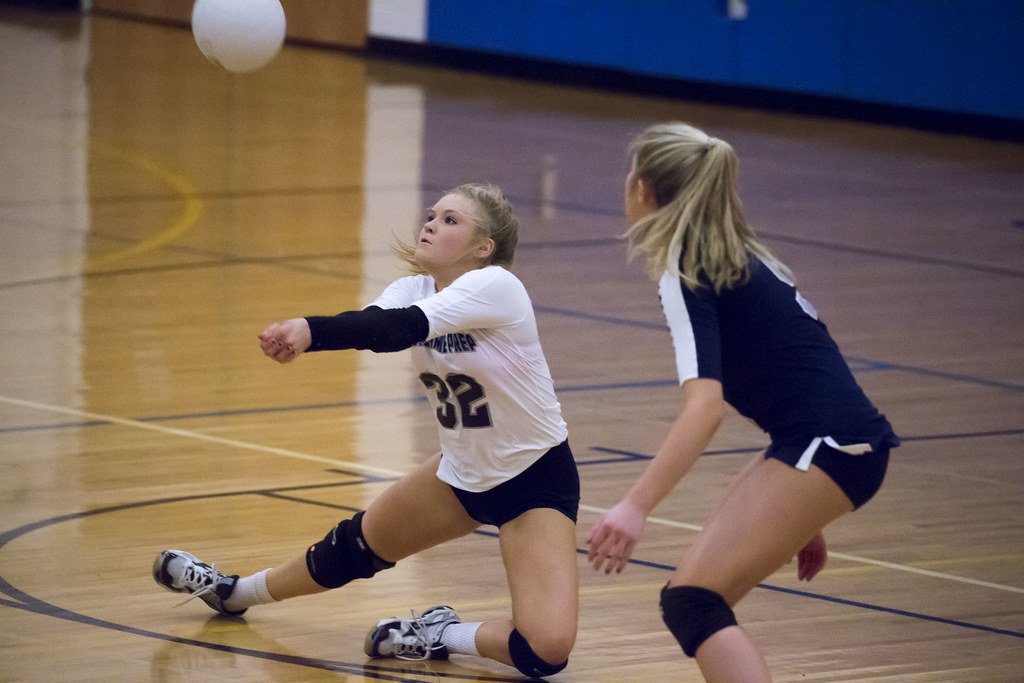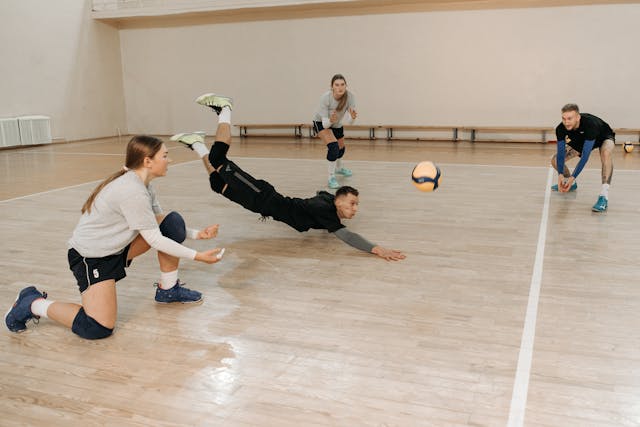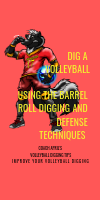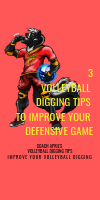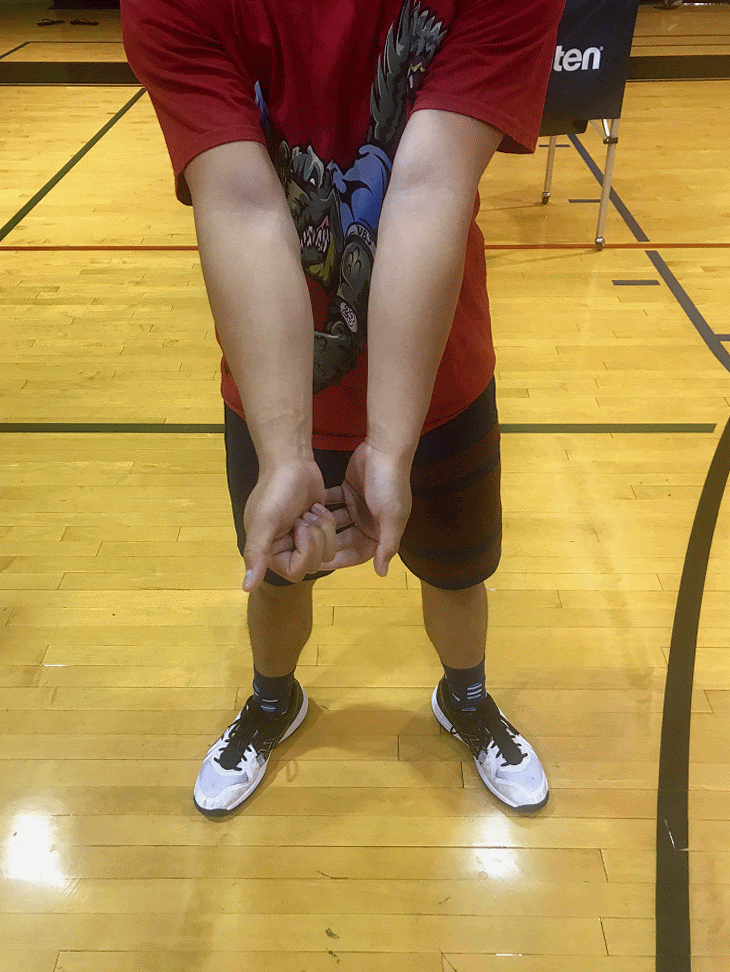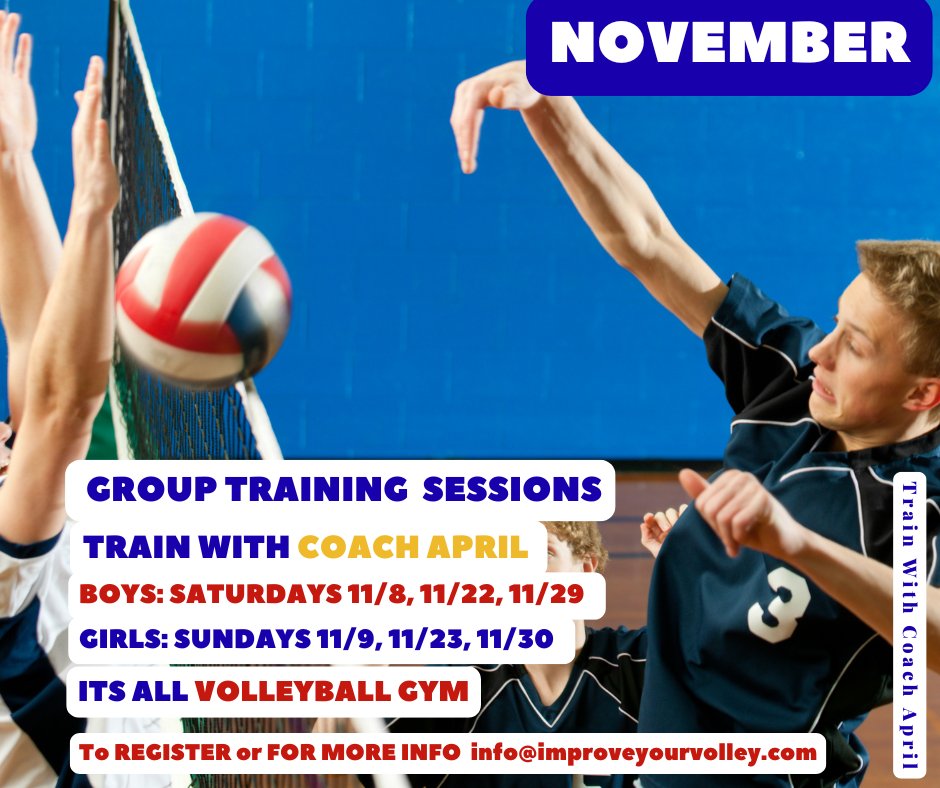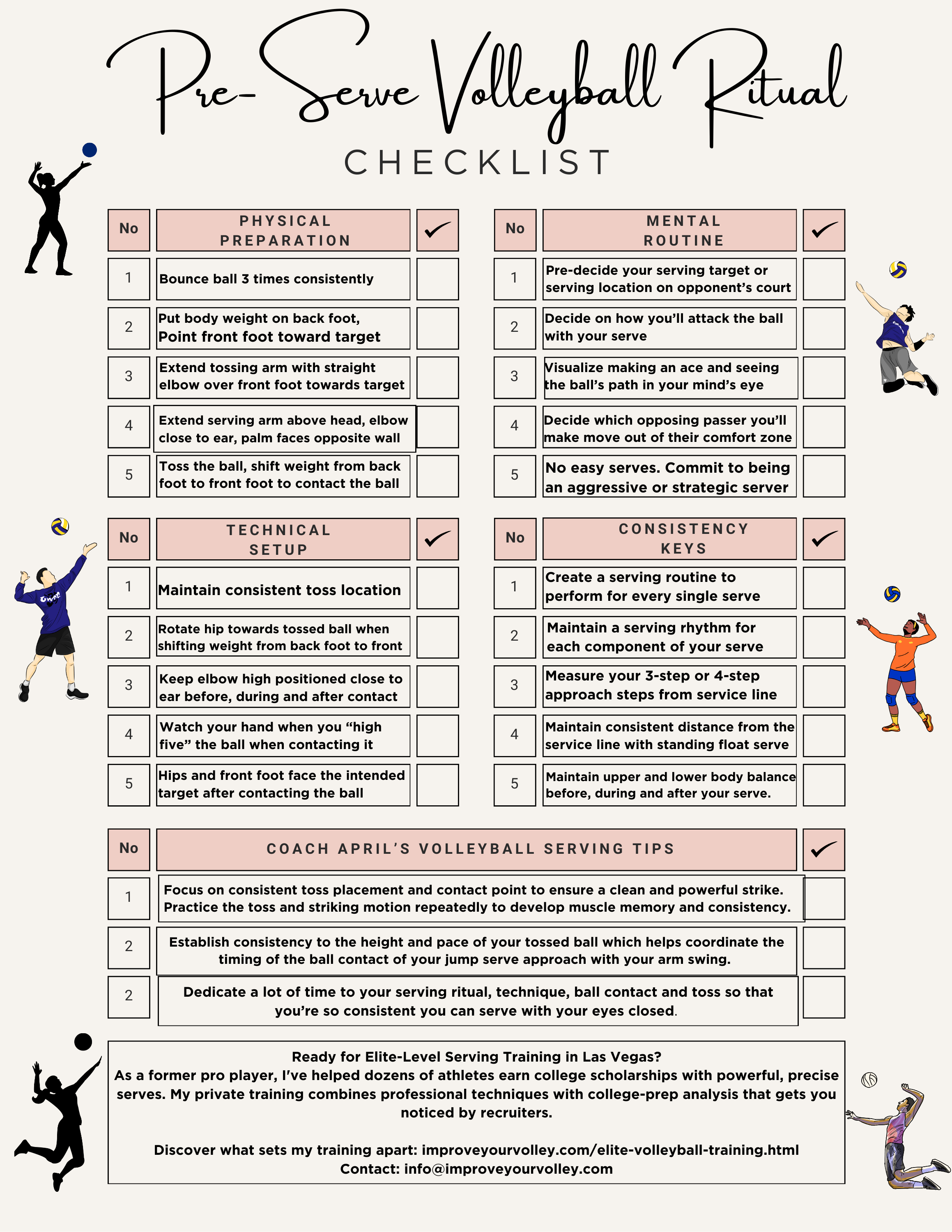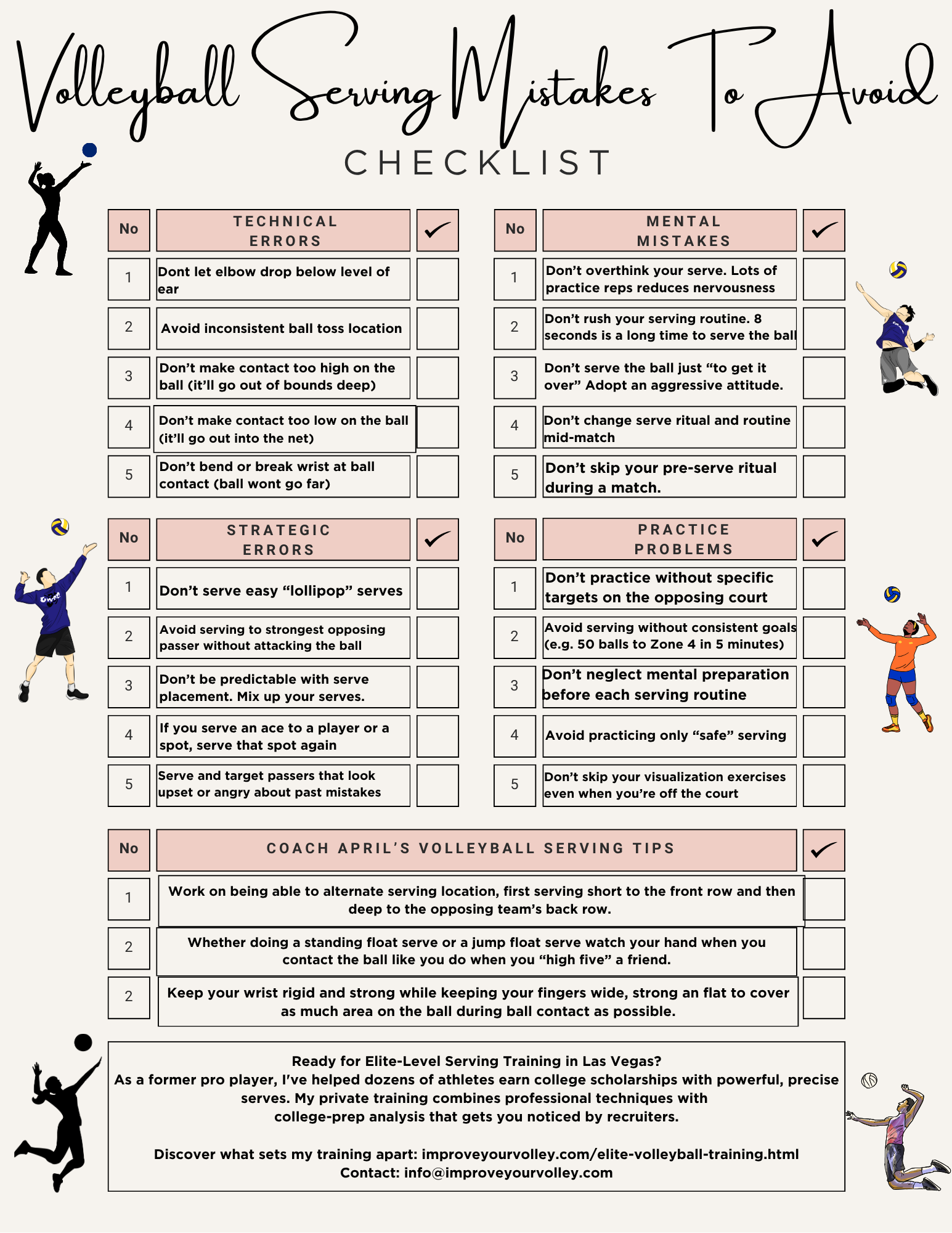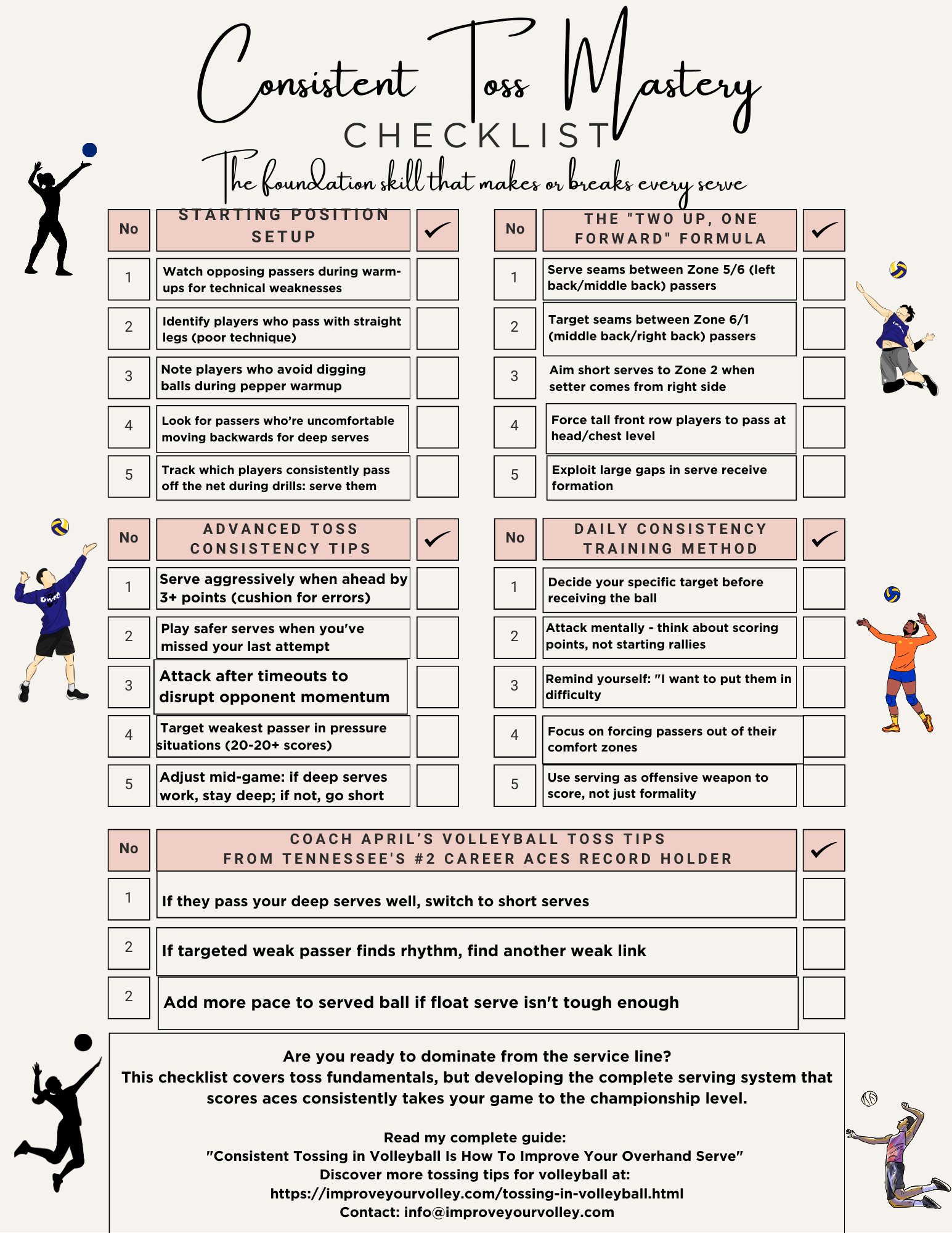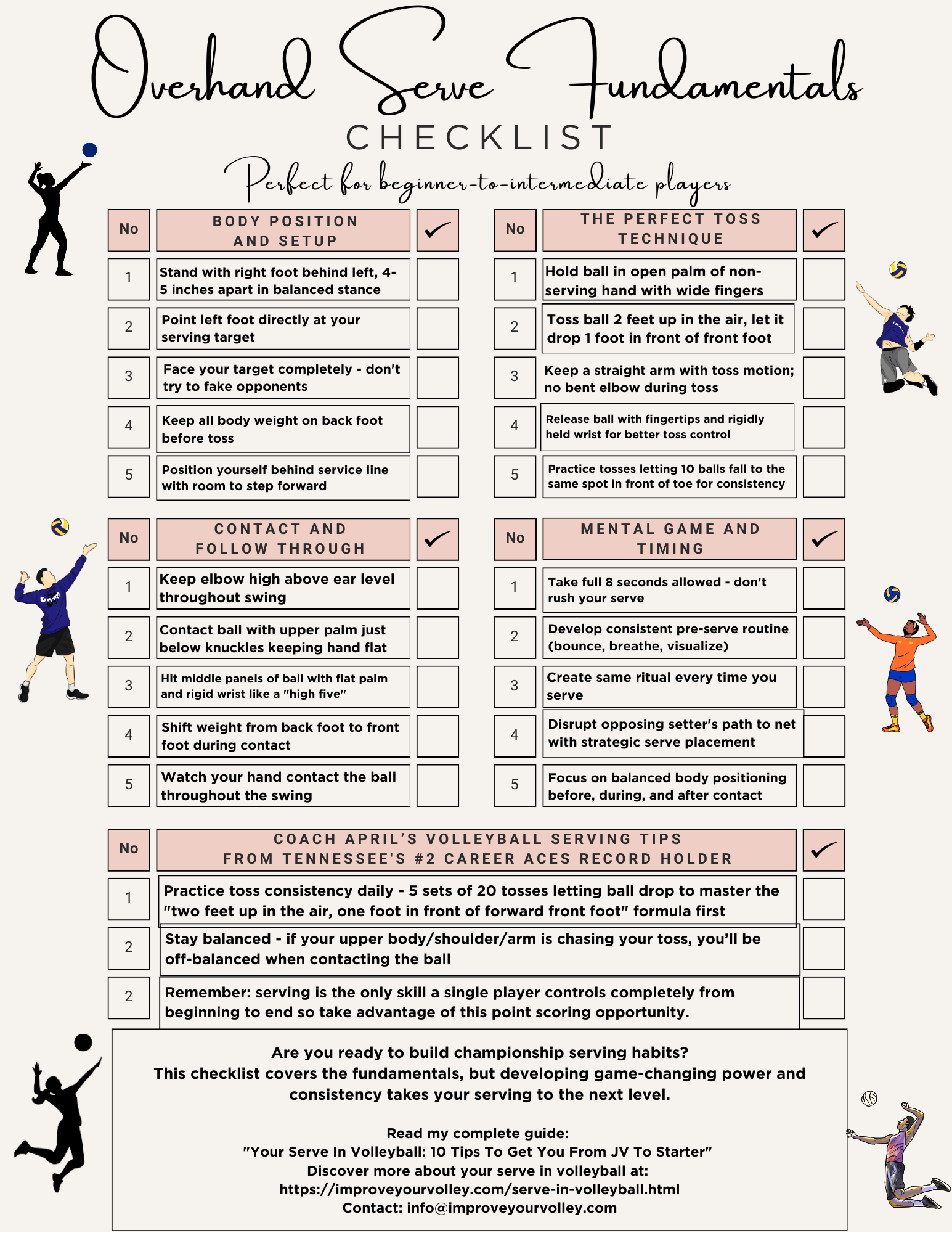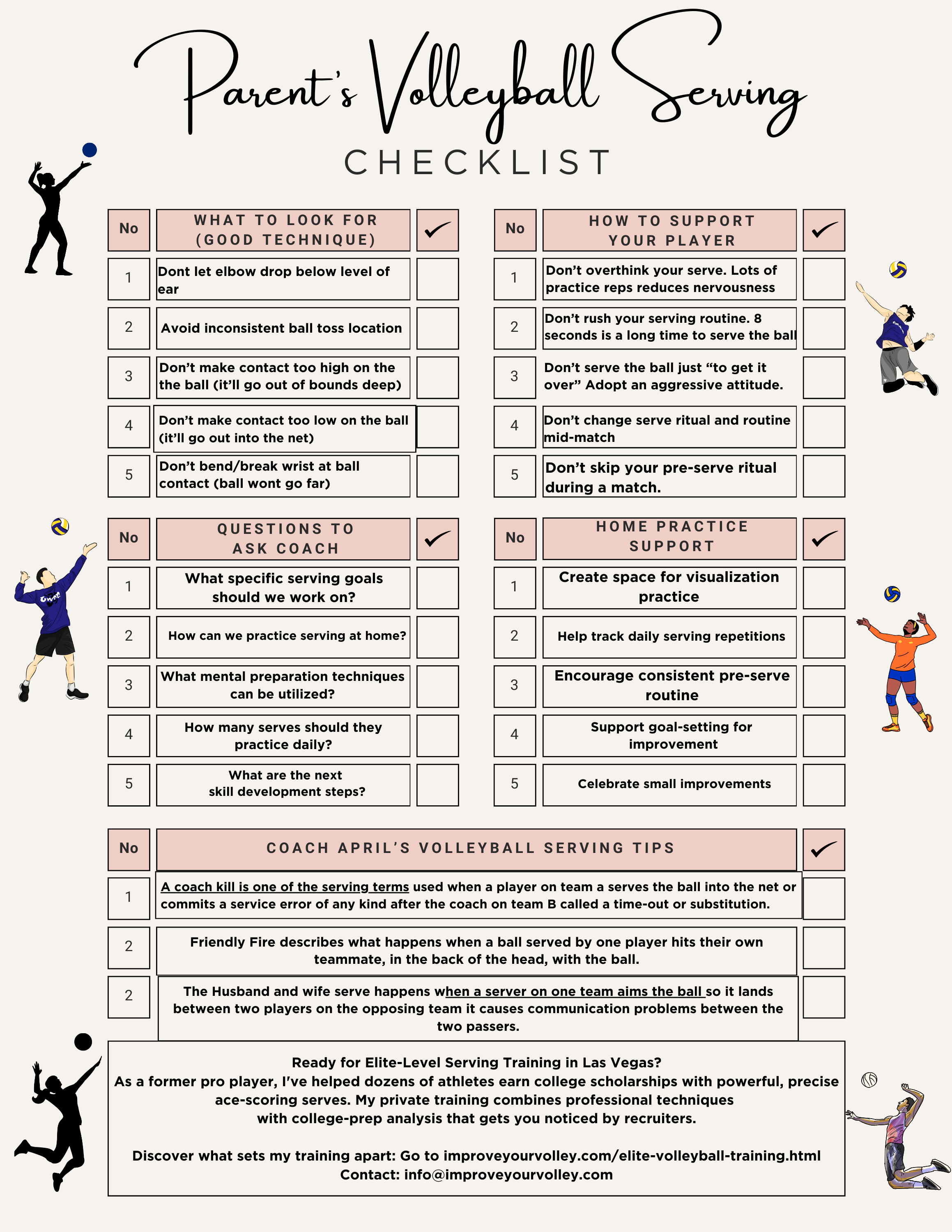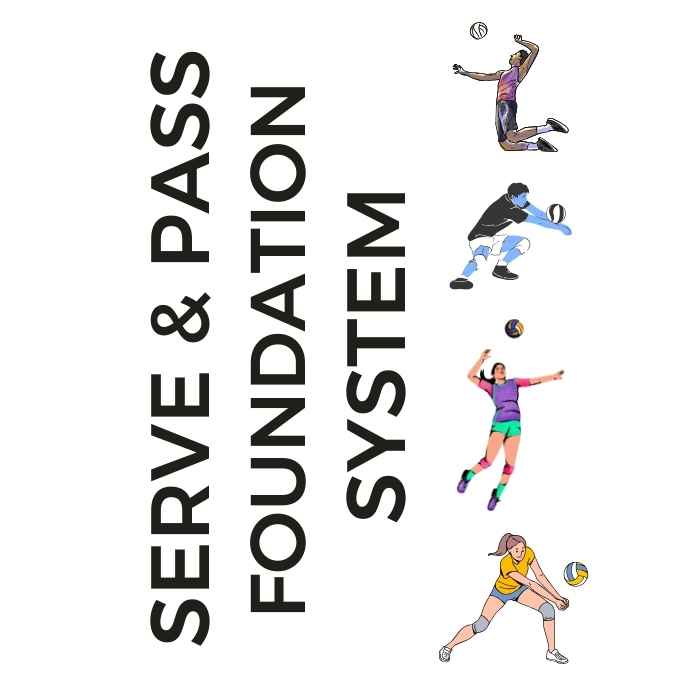
Serve + Pass Foundation System: The Complete Skills Arsenal The two-skill mastery system that transforms inconsistent players into the athletes coaches build their lineups around. Stop Struggling With The Two Most Important Skills In Volleyball!
- Improve Your Volleyball with Coach April
- Volleyball Techniques Fix Your Pass, Set, Serve,
- Volleyball Dig Technique
Step-by-step Instructions On Performing The Volleyball Dig Technique
Master the volleyball dig technique with my comprehensive guide. Learn step-by-step instructions, tips, and common mistakes to avoid for great defensive plays
Welcome to my comprehensive guide on mastering your volleyball digging skills.
That's me training with clients that are working on their volleyball dig technique for balls that are coming right at them.
Reserve your private one-on-one or small group training at https://www.improveyourvolley.com/volleyball-classes.html. Contact info@improveyourvolley.com
Whether you're a beginner looking to develop a strong defensive foundation or an experienced player aiming to improve your digging skills, you've come to the right place.
In this article, I provide you with a detailed breakdown of the dig technique, including its definition, purpose, step-by-step instructions, tips for execution, and common mistakes to avoid.
When you understand the fundamentals and implement best practices, you'll be well-equipped to make strong defensive plays and contribute to your team's success on the court.
Let's dive in and work on improving your digging game!
Let Me Explain The Definition and Purpose of The Volleyball Dig Technique
The volleyball dig technique is a defensive move used to receive an opponent's attack or spike.
It is performed to keep the ball from hitting the ground and keep the play alive.
The dig is typically used when the ball is approaching at a high speed from an elevated level in the air and as it approaches close to the floor, a player must learn how to return a ball with very specific technique to keep the ball off the floor.
Liberos run the backrow! Celebrate your position with this libero volleyball shirt designed for the defensive backs of volleyball.
Volleyball Digging Drills: Cross Court Digging Reps in Breakfast Club Warmups with Coach April
The goal of the dig is to control the trajectory of the ball and direct it towards your team's setter so they can run an offensive play.
Step-by-Step Instructions on How to Perform the Volleyball Dig Technique
How to Dig in Volleyball
To dig a volleyball up in defense you keep an attacked ball by the opposing team off your court floor by extending your arms and hands under the ball to deflect it back in the air before it hits the floor.
1. How to position yourself
Start in a low defensive stance with your
- knees bent
- back straight
- shoulders in front of knees
- weight balanced on the balls of your feet
- keep your arms straight but relaxed and ready in front of you
- palms turned up towards the ceiling
2. Read the hitter to anticipate the attack
- Observe the opponent's body language,
- the speed and direction of their spike approach,
- the speed of their arm swing
- the trajectory of the ball that they've been set (or that they're about to attack)
to anticipate where it will be hit.
This will help you react quickly and move into position.
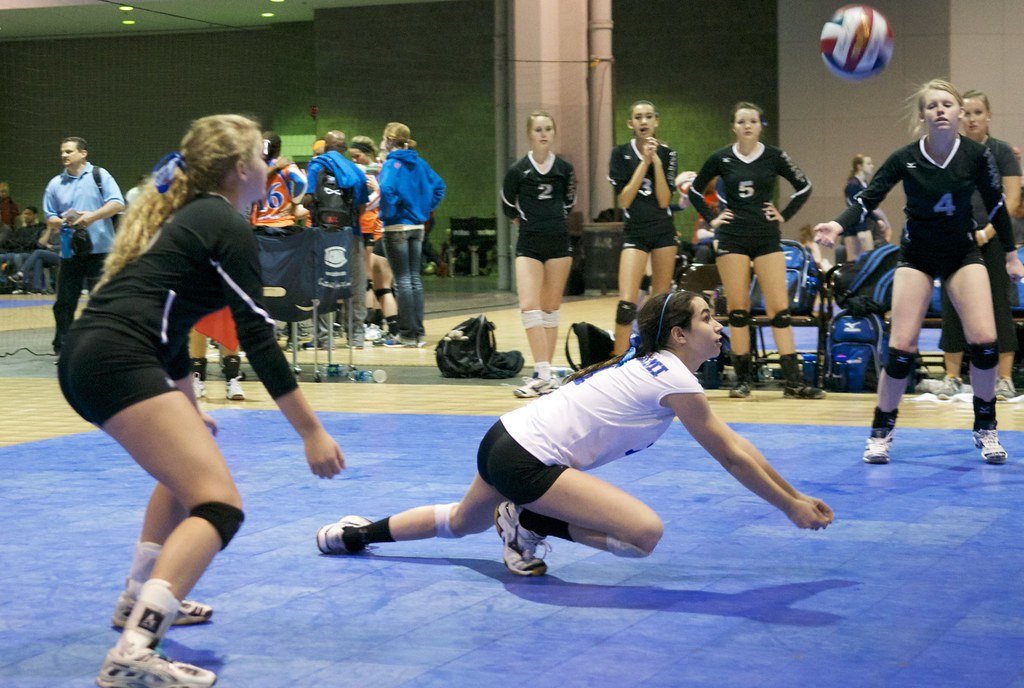 Read the hitter to anticipate the attack
Observe the opponent's body language,
the speed and direction of their spike approach,
the speed of their arm swing
the trajectory of the ball that they've been set (or that they're about to attack)
to anticipate where it will be hit.
This will help you react quickly and move into position.
Read the hitter to anticipate the attack
Observe the opponent's body language,
the speed and direction of their spike approach,
the speed of their arm swing
the trajectory of the ball that they've been set (or that they're about to attack)
to anticipate where it will be hit.
This will help you react quickly and move into position.3. Move to the ball
Take quick and compact steps towards the anticipated contact point.
Maintain a low, balanced athletic stance as you approach the ball
Defense is an attitude!
Watch Japan dig after dig, amazing volleyball defense!
4. Establish a platform
As the ball approaches, form a solid platform with your forearms by bringing them together, wrists locked, and hands firmly clasping one another. The platform should be angled slightly upwards to direct the ball upwards and towards your target.
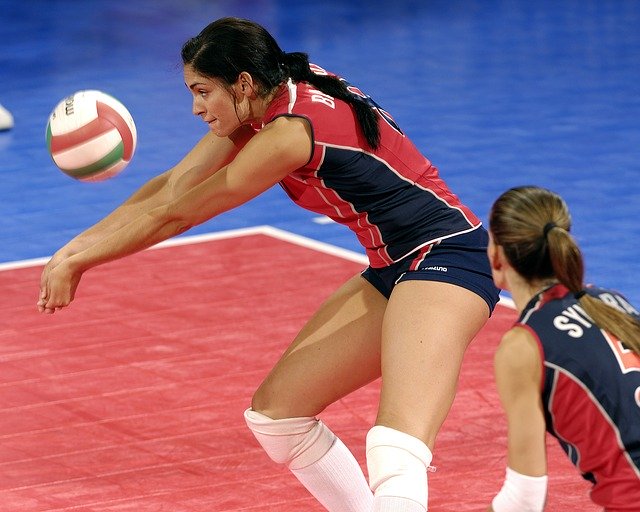 Enhance your digging skills on the volleyball court with our in-depth article. Discover the purpose and technique behind the dig, along with expert tips for success. Boost your defensive game today!
Enhance your digging skills on the volleyball court with our in-depth article. Discover the purpose and technique behind the dig, along with expert tips for success. Boost your defensive game today!
5. Absorb the impact
As the ball makes contact with your arms, keep your legs bent underneath you to help absorb the force of the ball you're contacting while keeping elbows straight and thumbs pressed together on both hands.
This will help control the direction and speed of the ball as it bounces of your digging arms and back up into the air...into the direction of where your platform is angled. .
6. Extend and follow through
Once you've made contact, keep your elbows straight and thumbs pointed to the ground and follow through with your wrists to direct the ball to your desired location. Keep your eyes on the ball throughout the entire motion.
7. Recover quickly
After executing the dig, prepare to transition back into your base defensive position or to transition to your offensive position by staying light on your feet so you're quickly ready for the next play.
By mastering the volleyball dig technique, you can contribute to your team's defensive efforts and keep the rally going.
Practice these step-by-step instructions to improve your ability to react, control the ball, and set up your team for a successful attack.
7 Tips and Best Practices for Doing The Volleball Dig Technique Effectively
1. Anticipate and read the attacker
Pay close attention to the body positioning and hitting tendencies of the attacker.
This will help you anticipate the direction and speed of the attack, allowing you to react quicker and make a successful dig.
Liberos must be passing masters. Grab a pair or two of volleyball digging sleeves that help you perform the passing techniques that make great liberos elite.
2. Focus on proper footwork
Quick and efficient footwork is crucial for getting into position to execute the dig.
Practice staying light on your feet and taking short, explosive steps to quickly move laterally or towards the ball.
3. Maintain a balanced stance
Keep your weight evenly distributed between both feet to maintain balance and agility.
This will enable you to react and adjust to the ball's trajectory more effectively.
4. Stay low and square to the net
Maintain a low defensive stance throughout the dig, keeping your knees bent and your body facing the net.
This will provide stability and allow you to react quickly in any direction.
5. Use your legs and core
Generate power and control in your dig by utilizing your leg and core muscles.
Bend your knees and engage your core when making contact with the ball to absorb the impact and maintain control.
Now that you're learning more about the volleyball dig technique - grab my step-by-step perfect platform mastery checklist used by my private training clients.
6. Focus on your platform
Keep your wrists locked and firm as you create a solid platform with your forearms.
This will help you control the direction and trajectory of the ball.
7. Communicate with your teammates
Effective communication is essential in a successful dig.
Prioritize clear and concise communication with your teammates regarding who will take the first ball and potential defensive strategies.
6 Common Mistakes to Avoid When Performing the Dig
1. Lack of proper positioning
Failing to position yourself correctly before the attack can lead to poor timing and difficulty in executing a successful dig.
Always be ready and anticipate the opponent's movements.
2. Failure to react quickly
Delayed reaction time can result in missed opportunities to dig the ball. Stay focused and react immediately to the attacker's actions.
3. Incorrect arm placement
Placing your arms too far apart or too close together can decrease your control over the ball. Keep your arms shoulder-width apart and maintain a firm platform for optimal results.
4. Overreaching or reaching too early
It is crucial not to overextend or reach for the ball too early. This can throw off your balance and positioning, leading to ineffective digs. Time your movements and reach for the ball at the peak of its trajectory.
5. Lack of communication
Failure to communicate with teammates can result in confusion and missed defensive opportunities. Keep open lines of communication and establish clear responsibilities during each play.
6. Poor body positioning
Allowing your body to collapse or lean too far forward or backward can hinder your ability to execute a successful dig. Maintain proper body alignment and stay balanced throughout the motion.
By following these tips and avoiding these common mistakes, you can improve your execution of the volleyball dig technique. Regular practice and focus on technique will enhance your defensive skills, making you a valuable asset to your team's success.
Do You Follow Me on Pinterest?
 Private or semiprivate volleyball indoor/sand lessons are an excellent way for young Las Vegas high school volleyball players to quickly improve their individual skills through a private or semi-private coaching experience.
These lessons are conducted by former pro volleyball player, former USA Volleyball High Performance instructor and Evaluator and Tstreet Vegas 18s head Coach April Chapple on a weekly basis.
Sign up now!
Private or semiprivate volleyball indoor/sand lessons are an excellent way for young Las Vegas high school volleyball players to quickly improve their individual skills through a private or semi-private coaching experience.
These lessons are conducted by former pro volleyball player, former USA Volleyball High Performance instructor and Evaluator and Tstreet Vegas 18s head Coach April Chapple on a weekly basis.
Sign up now!Follow me on Pinterest Volleybragswag to improve your game even faster!
I share alot of individual, partner and easy-to-do volleyball serving drills we do in class with my followers.
Many of these volleyball practice drills you can do at home by yourself or try at your next practice with your teammates.
If you're a B team or JV player trying to make varsity next year...your goal should be to complete 1000 reps a day of at least three of the basic skills on your own...volleyball passing, serving and setting should be at the top of the list.
Volleyball Techniques:
Where Do You Go Now?
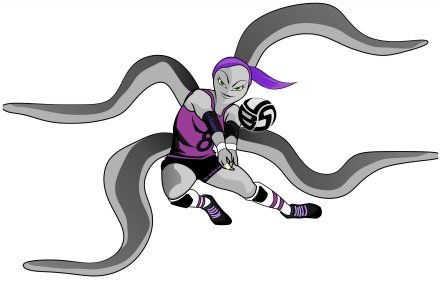 Learning how to dig a volleyball that isn't hit right at you requires you to start in a low position and finish in a low position which keeps you only inches from the floor when you start and complete the roll.
Learning how to dig a volleyball that isn't hit right at you requires you to start in a low position and finish in a low position which keeps you only inches from the floor when you start and complete the roll.Okay here's where you need to go now! There are three options:
- Learn more about Digging and Defense by clicking the Related Links below. .
- Follow the suggested reading on our Sitemap page Learning How To Play (Sitemap)
- Or visit the pages in the How to Play Volleyball section in the drop down menu at the top of the page to get started.
- Before leaving this page Say "Hi" to Miss O.I Gotchu the Octopus wearing the #8 jersey below. Miss O.I. is the libero for the All Beast VolleyBragSwag All Star team.
If your athlete struggles with consistent serve receive, gets subbed out, or is overlooked for playing time—this is the fix you’ve been looking for.

Struggling with passing consistency?
I help talented passers tired of getting pulled from games because of inconsistent serve receive skills BUILD passing confidence without expensive private lessons using the same 3-step system that's helped dozens of my athletes get recruited.
Download my eBook for $17.99 and start building the passing confidence that keeps you on the court—and gets you seen by college coaches.
From Lady Vol to Legend: Coach April Produces Powerful Passionate Players...is that you?
What Are You Looking For?
Click to Download Your Pre Serving Ritual Mastery Checklist pdf:
🎯Volleyball Pre Serving Ritual Guide -
Players! Learn How To Transform Your Serve from Weak to Weapon
Click to Download Your Parent's Volleyball Serving Checklist pdf
🎯Parent's Volleyball Serving Checklist Guide
Parents! Help Your Player Develop Championship Serves (Even If You've Never Played)

Hi there!
Thanks for stopping by. Hope you learned something today that will help you reach your volleyball goals.
Be sure to subscribe to my email newsletter so you can learn more each week!
Stay strong! Stay motivated!
-Coach April

SUSCRIBE to my email newsletter below!
 Click to learn more about the weekly volleyball classes and clinics or email info@imrpoveyourvolley.com for information
Click to learn more about the weekly volleyball classes and clinics or email info@imrpoveyourvolley.com for informationCongratulations to my seven Boys-18s Vegas Volley club players who played in two state championship finals yesterday, the 3A and 5A State champinship finals at Sunrise Mountain High School.
TOURNAMENT CHAMPIONS!
A-1 Vegas Volley VBC
In It To Win It Tournament
May 2 - 4, 2025 Tournament
Gold Medalists
18s Premier Division
Vegas Volleyball's Unsung Heroes: Celebrating Moms with Peace Love Volleyball Shirts
Ready to energize your volleyball mom journey?
Subscribe to my 'Producing Powerful Passionate Peaceful Players' email list above on ImproveYourVolley.com.
You'll receive energy-boosting tips, exclusive insights from me, Coach April Chapple on maintaining momentum in volleyball.
Let's power up the Vegas volleyball scene together!
Recent Articles
-
Workouts To Improve Volleyball Skills: 4-Week Training Plan & Tracker
Dec 26, 25 10:04 PM
Get complete structured 4-week workouts to improve volleyball skills with daily training schedules, self-assessment checklists, and progress tracking. -
How To Practice Volleyball Alone: Solo Drills That Build Real Skills
Dec 26, 25 06:20 PM
Learn how to practice volleyball alone with wall drills, progressions and weekly one-player training schedules to improve passing, setting, serving & hitting. -
6 Volleyball Setting Checklists For Players With College Prep Goals
Dec 24, 25 06:18 PM
6 volleyball setting checklists that build elite setters. Master hand positioning, footwork, set types, back setting & jump setting. Includes at-home drills.
